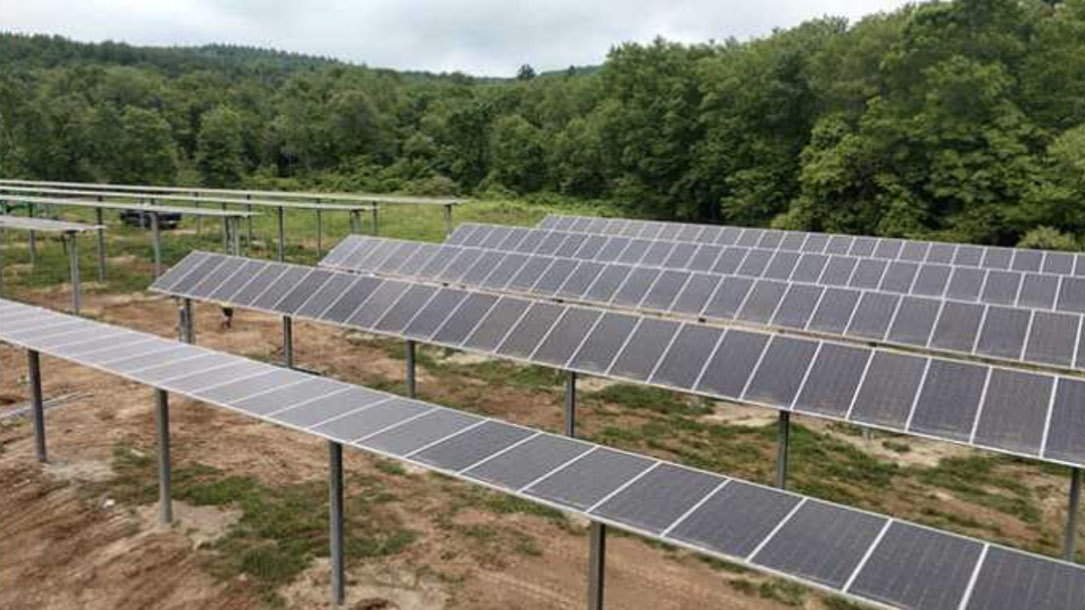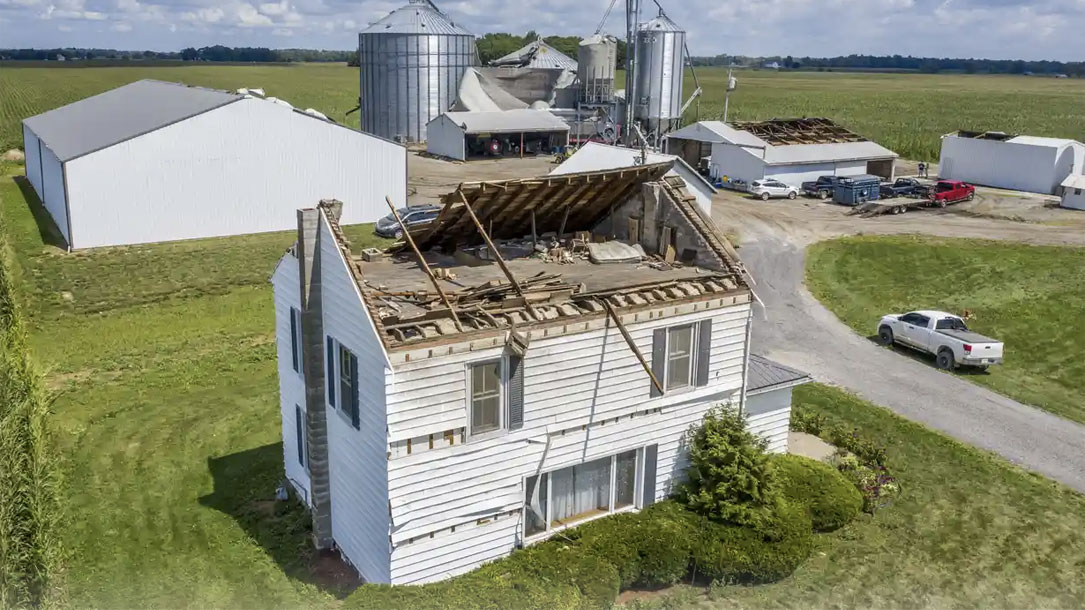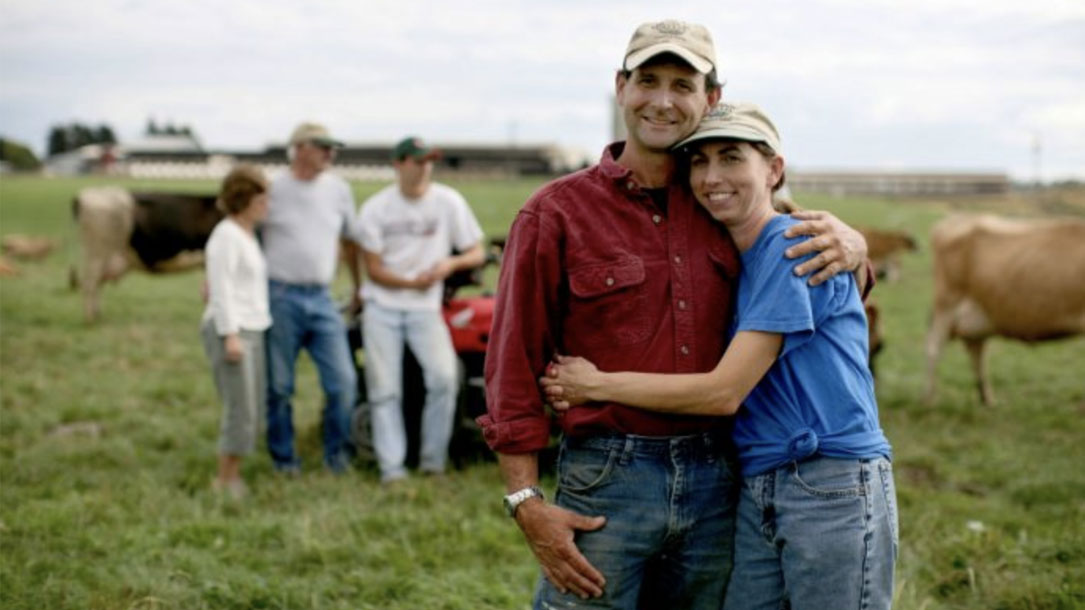
Wisconsin farmer mimics ecosystem where mastodons and ground sloths once roamed
Peter Allen is taking inspiration from the oak savannas that were once widespread in the Midwest.
He says conventional agriculture depletes the soil, but this approach to raising livestock can help build topsoil and store carbon.
“We’ve grown about three inches of topsoil in six years,” Allen says. “So that’s really inspiring.” By learning from the past, Allen hopes to produce food while also preserving savanna ecosystems for the future.

Installed: elevated solar supports family farm, cows, and crops
Generally, solar projects on agricultural land face pushback because traditional solar systems cover the ground in a manner that significantly reduces the amount of available farmland. This project did not face this kind of opposition because a dual-use system doesn’t replace crops, it works with them.
The array is designed to allow sufficient sunlight for the crops and is raised high enough in the air to allow tractors continued access underneath…[It] is designed with 20 ft. row-spacing and a minimum panel height of 10 ft. to improve performance and allow tractors continued access. Dual-use systems use special solar photovoltaic (PV) racking to harvest power from the same sunlight that nourishes the crops that grow under the mounts…

Extreme weather [just] devastated 10 million acres in the midwest. Expect more of this
The impacts of climate change are real and profound for our most basic industry: food. Fortunately, science tells us that we can make a real impact on climate change by planting less corn and more grass that sequesters carbon. Paying farmers to build soil health and retain water is a better investment than writing a crop insurance check for drought.
Farmers on the frontlines of climate change are trying to become more resilient to extreme weather by planting permanent grass strips in crop fields and planting cover crops for the winter that suck up nitrogen and CO2. The rate of adaptation would be quickened if conservation funding programs were not always under attack…

Just how does solar grazing work?
There can be concerns about solar overtaking farmland. Yet with good design and partnership with farmers, solar can actually improve soil health and keep farmers on the land. Here’s a short video by Owens Farm, in Pennsylvania, about how solar grazing works.
For additional information, including leases and technical documents, check out American Solar Grazing Association.

On-farm solar grows as farmers see economic rewards—and risks
Steve Pierson switched from raising conventional dairy cows in confinement to grazing the animals on organic pasture for a simple reason: they kept getting sick. He had heard and read about the fact that cows that ate grass had healthier immune systems, since their bodies are designed to digest grasses, not the grain used as feed at most dairies. The transition did make the cows live longer, and he also began to notice other environmental benefits, such as healthier soil and more perennial grasses…

Kiss the Ground
A cure for climate change starts with a simple solution right under our feet. Kiss The Ground is now streaming on Netflix, and the exclusive, live Q&A with Gisele Bündchen, Woody Harrelson, and Ian Somerhalder, plus the filmmakers, farmers, and activists behind the regenerative movement, is right here.

New revenue option for ag producers to yield attractive returns
Oregon ranchers Dan and Suzy Probert grow cattle and healthy soil. And with the help of Farm Bill programs, they’re protecting the Lightning Creek Ranch from development as well as finding new revenue options like carbon trading markets…

Smart Solar Siting for New England: free webinar series
Join American Farmland Trust, Acadia Center, Conservation Law Foundation, Vote Solar, and Vermont Law School for a four-part webinar series, as we share outcomes from our joint two-year project seeking to reduce conflicts over the siting of solar facilities…

Climate change puts bees and flowering plants out of sync
Warmer spring temperatures are causing bees to hatch earlier, putting them out of sync with the flowers that they pollinate, a new study shows.
The researchers say the study is the first of its kind to show climate change affecting the sort of relationships between species that have evolved together over millions of years…

Michigan opens 3.3M farmland acres to bee-friendly solar projects
Michigan Democratic Gov. Gretchen Whitmer on Monday announced an executive decision that frees up 3.3 million acres of farmland protected under the state’s Farmland and Open Space Program to solar development. Previously, the land was allowed to host wind turbines and oil and gas exploration, but solar was historically restricted because it was considered to have a larger footprint…












